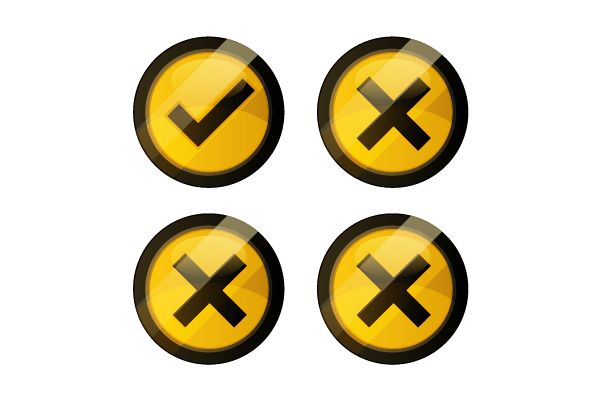In the dynamic and ever-evolving world of cryptocurrency, traders are continuously exploring strategies to unlock the potential of their portfolios. The landscape is buzzing with opportunities, beckoning traders to dive into the vast pools of possibilities. Day trading and swing trading emerge as two luminaries in this diverse universe, each illuminating unique pathways to market mastery.
Day trading is like the spirited pulse of the cryptocurrency markets, where every heartbeat, every rhythmic fluctuation, is a canvas for crafting trades. It’s where immediacy and agility reign, a realm defined by rapid strategies and moment-to-moment decision-making. It’s not just a trading style, but a high-octane adventure through the shifting sands of market dynamics, demanding a blend of sharp instinct, analytical prowess, and a seamless adaptability to the market’s rhythm.
Swing trading, on the contrary, unfolds as a more measured dance with market trends, where traders sway with the ebbs and flows of cryptocurrency valuations over time. It’s a space where the broader arcs of market momentum are explored, where traders harmonize their strategies with the more extended melodies of market movements. Swing trading invites a holistic view of market trends, encouraging traders to embrace a nuanced understanding of market narratives and to cultivate the patience to let their trades unfold with the market’s natural rhythms.
These two strategies echo within the cryptospheres, each with its rhythm and resonance, offering traders a symphony of approaches to navigate the tumultuous waters of cryptocurrency markets. In our comprehensive exploration, we will demystify these popular trading styles, unraveling their attributes, and shedding light on their differences, guiding you in choosing the one that resonates with your trading aspirations and risk appetite.
Together, we’ll journey through the intricacies of these strategies, equipping you with the insights to navigate the vibrant tapestry of cryptocurrency trading with confidence and clarity.
What is Day Trade in the Cryptocurrency World?
Day trading in the cryptocurrency market involves executing trades within a single day. Traders aim to capitalize on the market’s short-term price fluctuations. It is a strategy ingrained in quick decisions and a profound understanding of market analysis.
Day traders ride the volatile waves of the crypto market, making profits from small price changes in cryptocurrency assets. They spend a considerable amount of time in front of their screens, meticulously analyzing charts, patterns, and market news to make informed trading decisions swiftly.
This type of trading requires a strong grasp of technical analysis and a well-thought-out strategy. It’s not merely about the adrenaline rush, but about harnessing the persistent market movements, aiming to close the day with a profit after covering the trading costs and fees.
Also Read: Fund Management Software: Enhancing Investment Efficiency
What is Swing Trading in the Cryptocurrency Realm?
Swing trading is a strategy that allows traders to benefit from the ‘swings’ or the cyclic movements of the market. Unlike day traders, swing traders hold their positions for several days or even weeks, aiming to capitalize on expected upward or downward market shifts.
For swing traders, understanding market trends and asset momentum is key. They dive deeply into technical analysis, supplemented by fundamental analysis, to discern the potential direction of cryptocurrency prices over an extended period.
Swing trading offers the flexibility of not having to monitor the markets incessantly, giving traders the leeway to align their trading activities more flexibly with their schedules, while still leveraging the volatile nature of cryptocurrencies for potential gains.
Difference Between Day Trading and Swing Trading
 1. Day Trading in Cryptocurrency
1. Day Trading in Cryptocurrency
Day trading is an invigorating and challenging style of trading that resonates with those who desire a hands-on approach. It is marked by agility and rapid decision-making, where traders aim to capitalize on the market’s short-term fluctuations. Day traders immerse themselves in the continuous flow of market data, engaging in multiple trades throughout a single day, trying to seize every fleeting opportunity presented by market volatility.
This style demands a significant investment of time and a sharp focus. Day traders need to be on their toes, equipped with well-defined strategies, ready to make swift and informed decisions that align with the ever-changing market mood.
2. Swing Trading in Cryptocurrency
Swing trading adopts a more deliberate pace, allowing traders to navigate the market’s momentum with a broader perspective. Swing traders aim to capture price movements over a period, holding onto their positions for several days or even weeks, waiting for the right moment to harvest the gains from the anticipated market swings.
Swing trading demands a strong grasp of market trends and a patient approach, allowing for a comprehensive analysis that informs more nuanced and strategic trading decisions. It offers a more tranquil trading experience, giving traders the time to make well-rounded decisions based on extended market observations.
3. Differences Between Day and Swing Trading
The distinction between these trading styles lies primarily in their approach towards market engagement and the duration of trades. Day trading is about capturing the immediate, engaging in a dynamic interplay with the market’s minute-to-minute fluctuations. It requires a robust, quick-witted strategy and a readiness to adapt continuously.
Swing trading, in contrast, unfolds over a more extended canvas, where trades are nurtured over time, allowing traders to seize larger market movements. It offers a space for more reflective decision-making, grounded in a broader understanding of market trajectories and trends.
Understanding these differences is crucial for traders, helping them align their trading style with their individual preferences, lifestyle, and the level of risk they are willing to undertake in their cryptocurrency trading adventures.
Tools and Techniques: The Gear Behind the Strategies
 Every trading strategy in the cryptocurrency realm is backed by a robust set of tools and techniques. These instruments are the bedrock supporting traders as they navigate the tumultuous waters of digital currencies, offering insights that guide decision-making and strategy optimization.
Every trading strategy in the cryptocurrency realm is backed by a robust set of tools and techniques. These instruments are the bedrock supporting traders as they navigate the tumultuous waters of digital currencies, offering insights that guide decision-making and strategy optimization.
a. Tools Essential for Day Trading
Day traders operate in the fast lane, necessitating tools that facilitate quick and informed decisions. Technical analysis is their compass, guiding them through the market’s immediate fluctuations. They frequently leverage tools such as candlestick patterns that depict market sentiments visually, offering a snapshot of buying and selling pressures.
Moving averages further streamline their decision-making by smoothing out price actions and revealing trend directions, while the Relative Strength Index (RSI) helps identify overbought or oversold conditions. Platforms equipped with real-time data and a myriad of analysis tools are indispensable, providing the necessary firepower to engage in rapid, data-driven trading.
b. Swing Trading’s Analytical Arsenal
Swing traders, though also reliant on technical analysis, often infuse their strategies with elements of fundamental analysis. Their toolkit is diverse, incorporating instruments that offer a panoramic view of market dynamics. They often utilize platforms that merge various analytical tools, ensuring a well-rounded perspective to inform their trade decisions.
Market sentiment tools, coupled with timely news updates, are particularly valuable, providing a broader context that influences market movements. These tools, when synchronized with technical indicators, offer a rich tapestry of insights, enabling traders to craft strategies that resonate with longer-term market rhythms and cycles.
c. Confluence of Tools and Techniques
In the vibrant ecosystem of cryptocurrency trading, having a diverse toolkit is a tremendous asset. Both day and swing traders benefit from a confluence of tools and techniques that enhance their market reading and strategy execution. While each trader might have unique preferences and inclinations towards specific tools, a comprehensive approach that embraces various analytical perspectives often proves to be most effective in navigating the market’s volatility and unpredictability.
Harnessing the potential of these tools, traders can tailor their strategies, whether day or swing trading, with enhanced precision and confidence, reinforcing their market positions and decision-making in the dynamic arena of cryptocurrency trading.
Risk and Reward: The Balancing Act in Crypto Trading
Trading in the cryptocurrency market is akin to navigating a boat through stormy seas. The journey encompasses encountering waves of risk and reward, where achieving equilibrium is essential for sustaining and thriving within the volatile realms of crypto trading.
a. Day Trading: Navigating the Rapid Currents:
In the whirlwind world of day trading, the balancing act between risk and reward becomes a continuous endeavor. Here, the markets are vibrant, characterized by swift currents of price fluctuations. Day trading involves engaging with these rapid shifts, which, while teeming with opportunities for profit, also carries inherent risks due to the market’s unpredictable nature.
The very essence of day trading – seeking profits from short-term market movements – brings with it a heightened exposure to risk. Prices in the cryptocurrency market can swing dramatically within short periods, requiring day traders to be exceptionally vigilant and responsive to the market’s changing moods. However, the frequency of trading also opens up numerous windows for garnering profits, making it a dynamic yet challenging domain.
b. Swing Trading: Sailing Through Broader Horizons:
Swing trading unfolds in a more serene environment, where the pace allows for a contemplative approach towards balancing risk and rewards. Trades linger for more extended periods, embracing the broader strokes of market trends. This stretched timeframe provides a canvas where risks can be assessed and managed with a degree of flexibility and foresight.
The extended nature of swing trades allows for adjustments and alignments with ongoing market trends, potentially softening the blow of abrupt market shifts. However, a longer exposure also brings susceptibility to unforeseen market changes, news events, and evolving market sentiments, which can influence the trajectory of trades.
c. Achieving Equilibrium:
Mastering the balance between risk and reward in cryptocurrency trading involves a nuanced understanding of the chosen trading style’s intricacies. Both day and swing trading come with their flavors of risks and opportunities.
For a trader, achieving success lies in cultivating a strategy that harmonizes with their risk tolerance, trading objectives, and the market rhythms they choose to dance with. By doing so, traders can optimize their journeys, steering through the vibrant yet challenging landscapes of cryptocurrency trading with a sense of balance and strategic finesse.
Consistency and Patience: Key Virtues in Trading Styles
Consistency and patience are virtues that resonate profoundly with trading disciplines. Day traders seek consistency through multiple trades, honing their strategies to turn a profit in the majority of their positions. The goal is to compound small, consistent gains over time, despite the inevitable losses that come with the territory.
Swing traders cultivate patience, allowing trades to unfold over more extended periods, giving market trends time to materialize. They aim for larger gains in fewer trades, ensuring that the profits from successful trades are substantial enough to cover losses and still yield a positive net return.
Adaptability: Evolving with the Crypto Market’s Tides
 Adaptability is a crucial trait that traders need to foster. The cryptocurrency market is notorious for its unpredictability and swift shifts in sentiment and trends. Day traders need to be highly adaptable, continuously updating and tweaking their strategies to resonate with the prevailing market moods.
Adaptability is a crucial trait that traders need to foster. The cryptocurrency market is notorious for its unpredictability and swift shifts in sentiment and trends. Day traders need to be highly adaptable, continuously updating and tweaking their strategies to resonate with the prevailing market moods.
Swing traders, while having the luxury of a longer time frame, also need to remain adaptable. Their success lies in their ability to modify their strategies based on evolving market trends and unforeseen developments, ensuring their trading approaches remain robust and relevant.
Read Next: What Is Electronic Trading? Revolutionizing Financial Markets
Risk Management is another essential quality that traders must cultivate. The volatile nature of the cryptocurrency market makes it a high-risk environment, where substantial losses can occur within short periods. Traders, both day and swing, should implement rigorous risk management protocols to safeguard their investments. This involves setting stop-loss and take-profit levels, diversifying their portfolio, and not investing more than they can afford to lose. A disciplined approach to risk management helps traders navigate the market’s uncertainties and preserves their capital for future trading opportunities.
Continuous Learning is indispensable in a trader’s journey. Given the rapidly changing landscape of the cryptocurrency market, there’s always something new to learn. Traders must stay abreast of the latest market trends, technological advancements, and regulatory changes that could impact their trading strategies and decisions. By dedicating time to education and research, traders can make informed decisions, enhancing their prospects of achieving consistent profitability.
Conclusion
Navigating the turbulent waters of cryptocurrency trading demands strategy and insight. Both day trading and swing trading offer unique approaches to maneuvering through the market’s volatility. Understanding the intricacies, demands, and rhythms of each will empower traders to make informed decisions aligning with their trading aspirations and risk appetite.
Choosing between day trading and swing trading is a personal decision influenced by various factors including one’s time commitment, risk tolerance, and trading objectives. Equipped with the knowledge of both, traders are poised to make a choice that aligns with their vision, steering their trading journey toward potential success in the cryptocurrency realms.

